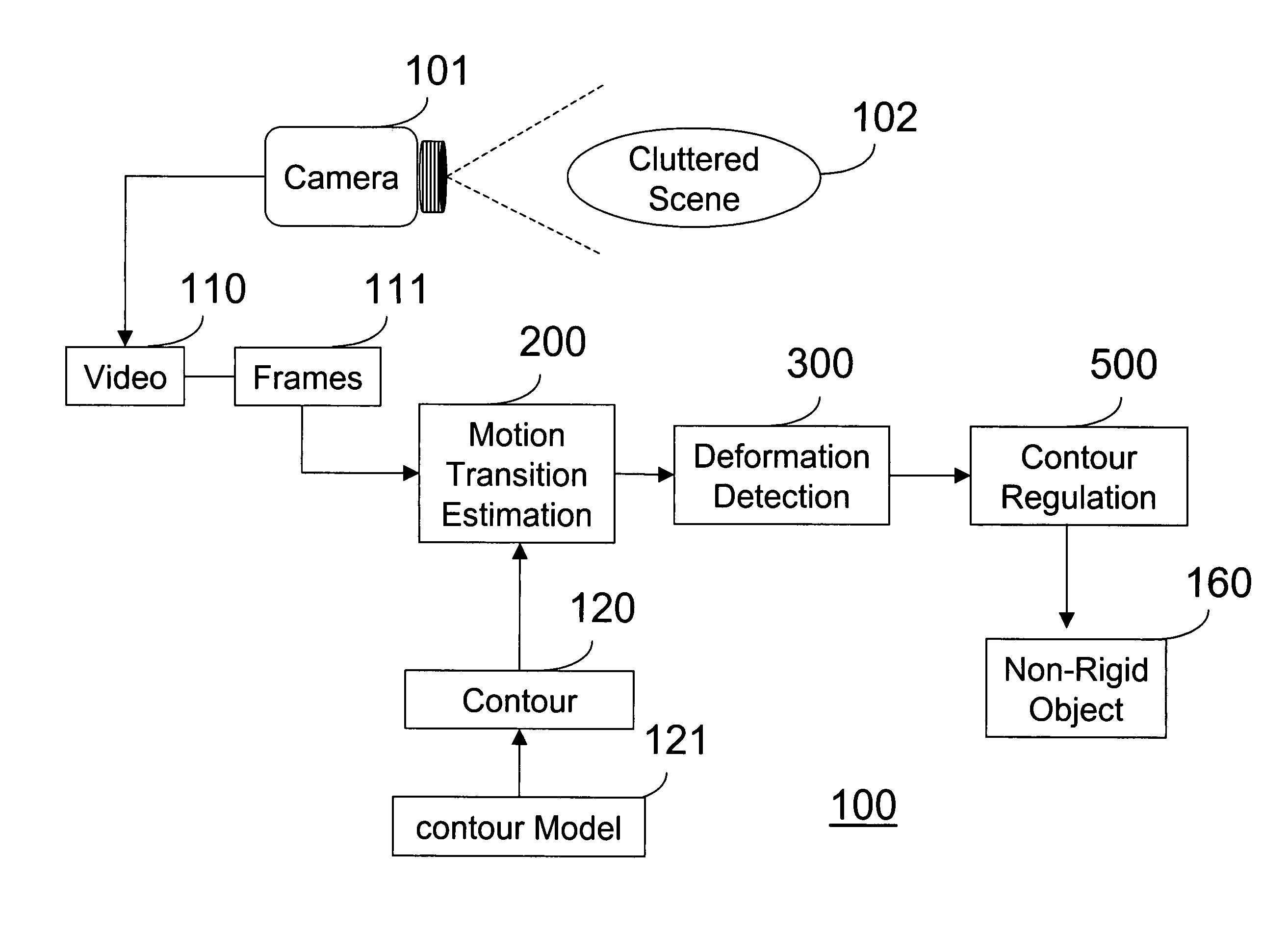Subspace projection based non-rigid object tracking with particle filters
a particle filter and subspace projection technology, applied in the field of computer vision, can solve the problems of less efficient method when applied to non-rigid object tracking and video sequences with heavily cluttered backgrounds, and inability to discriminate actual object boundaries according to the appropriate model, so as to improve the performance of non-rigid contour tracking
- Summary
- Abstract
- Description
- Claims
- Application Information
AI Technical Summary
Benefits of technology
Problems solved by technology
Method used
Image
Examples
Embodiment Construction
[0015]FIG. 1 shows a method 100 for tracking a non-rigid object in a video 110 acquired by a camera 101 of a cluttered scene 102. Each frame 111 of the video is processed according to a contour 120. The initial contour can be obtained manually or from some predetermined contour model 121, as described below.
[0016] The processing steps include motion transition estimation 200, deformation detection 300, and contour regulation 500 to track the non-rigid object 160.
[0017] As shown in greater detail in FIG. 2, for each frame 111, and according to a current contour 120, support points 211 for B-spline curves are selected 210. Normal lines 215 are constructed on the support points, and features 217 are extracted 216. A density 241 of the features is measured 240 using a spatial Poisson distribution 242.
[0018] The support points 211 are also used to generate 220 particles 221 according to a dynamic transition model 219. Likelihoods 231 are determined 230 using the measured densities. Th...
PUM
 Login to View More
Login to View More Abstract
Description
Claims
Application Information
 Login to View More
Login to View More - R&D
- Intellectual Property
- Life Sciences
- Materials
- Tech Scout
- Unparalleled Data Quality
- Higher Quality Content
- 60% Fewer Hallucinations
Browse by: Latest US Patents, China's latest patents, Technical Efficacy Thesaurus, Application Domain, Technology Topic, Popular Technical Reports.
© 2025 PatSnap. All rights reserved.Legal|Privacy policy|Modern Slavery Act Transparency Statement|Sitemap|About US| Contact US: help@patsnap.com



